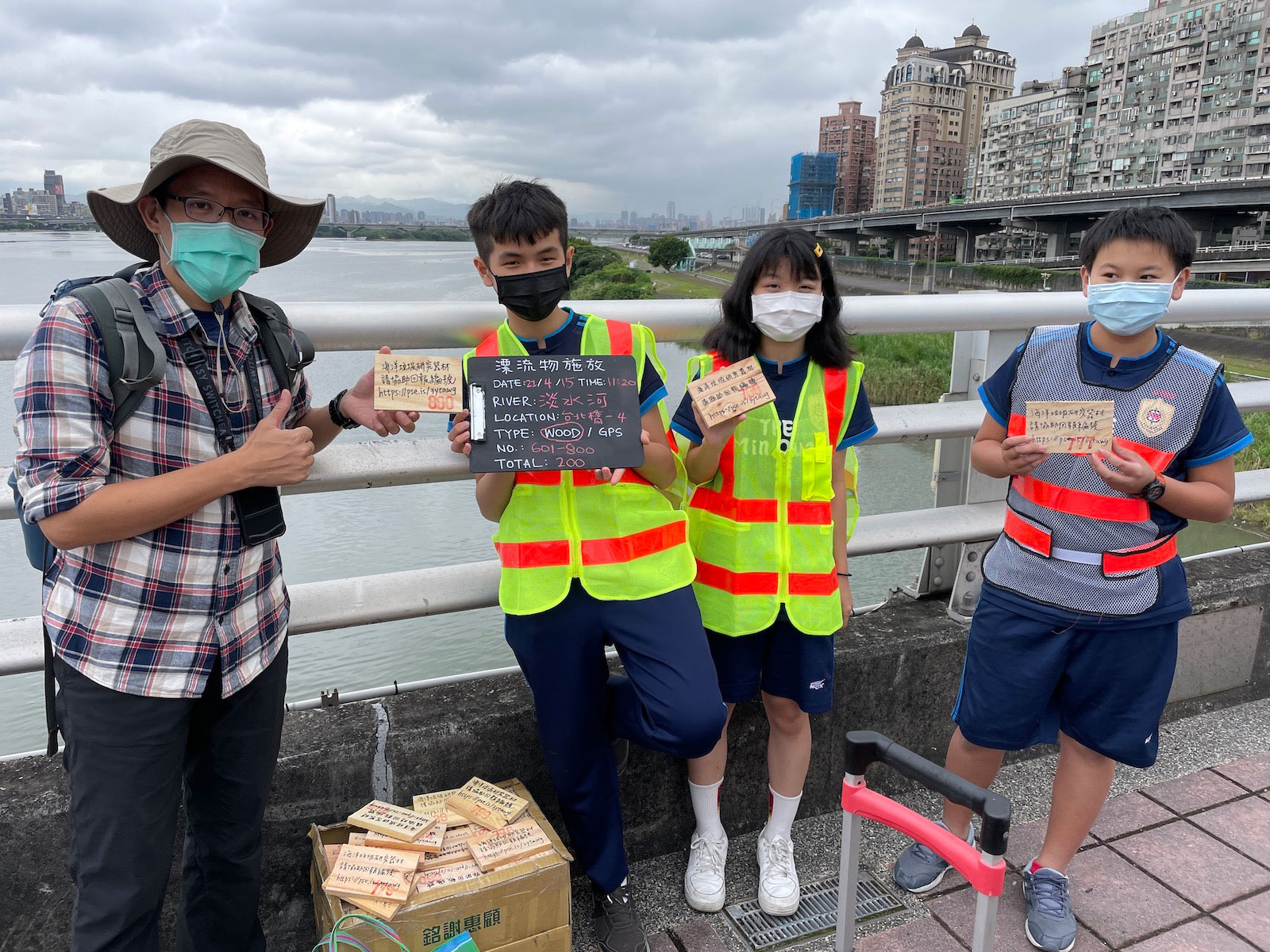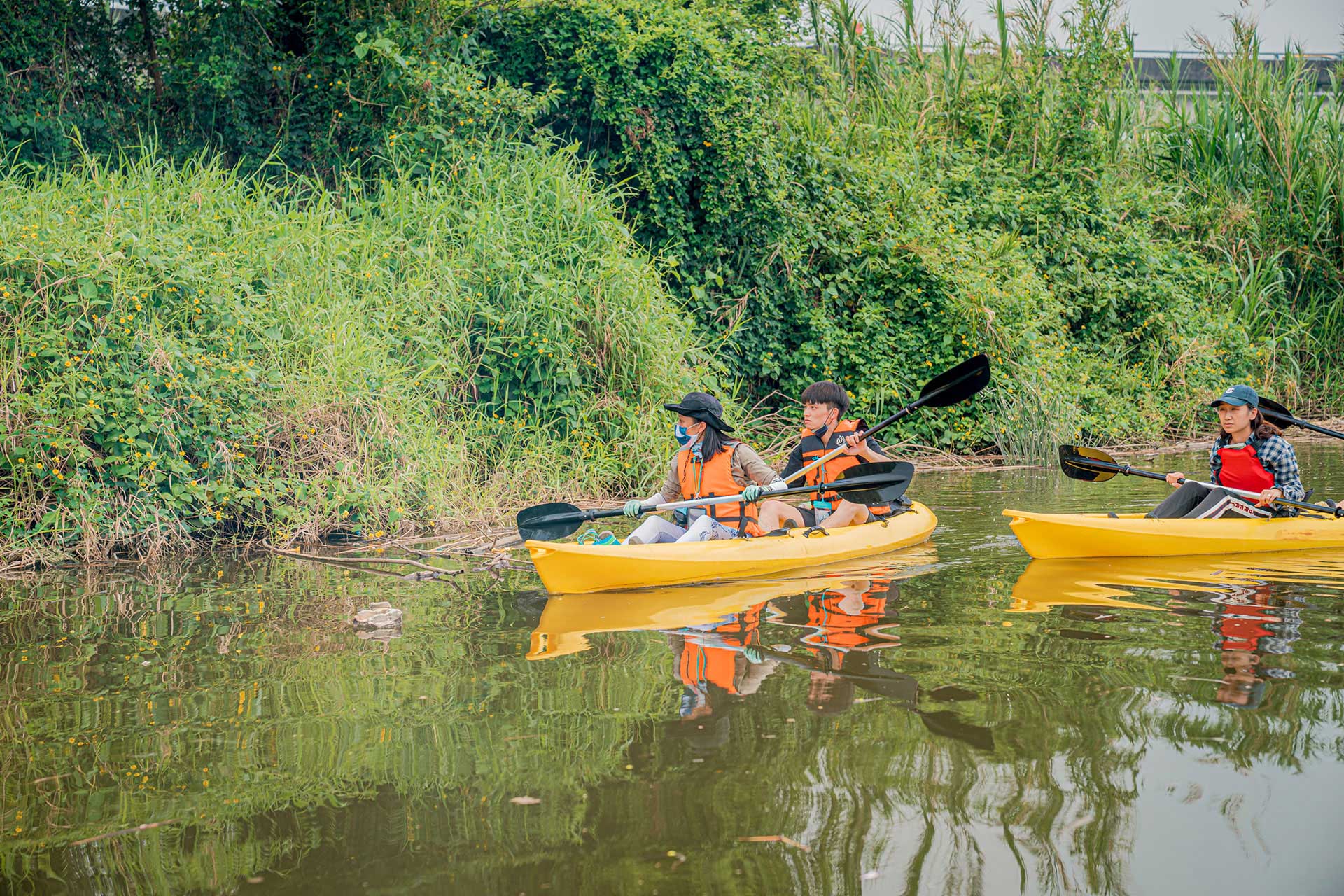Rivers are assumed as one of the significant sources of global marine plastics. However, the transportation of floating plastic on the downstream riverine surface is still unknown due to the multiple environmental factors of geography and hydrology. To simulate the transportation of anthropogenic debris in rivers, we use wood drifters and GPS drifters to record the drifting path, the drifting time, and the distance of transportation.
During the rainy season of 2021 and 2022, we deployed 2140 wood drifters and 3 GPS tracking drifters in two big rivers, with eight million and two million populations in the watersheds, in East Asia. The citizen scientists used several approaches such as walking, kayaking, and rowing boats to find the drifters. The result showed that the transportation of wood drifters would be influenced by hydrological factors such as rainfall in the catchment, water level, flow direction, and velocity. In one release experiment in the middle reaches, the wood drifters quickly moved upstream for 5 km within a 24-hour tidal cycle. In another experiment in the lower reaches, the drifters may have been affected by windage. After being released for 3 days, they still did not enter the open water; and were mainly stranded on sandbars within a 2-kilometer radius of the estuary. The recovery locations of most wood drifters are highly overlapped with marine litter hotspots for certain plastic materials such as Styrofoam.
This methodology is suitable for public participation, and it could benefit the response to extreme weather events, the outreach of environmental education, and the development of marine debris policy.






